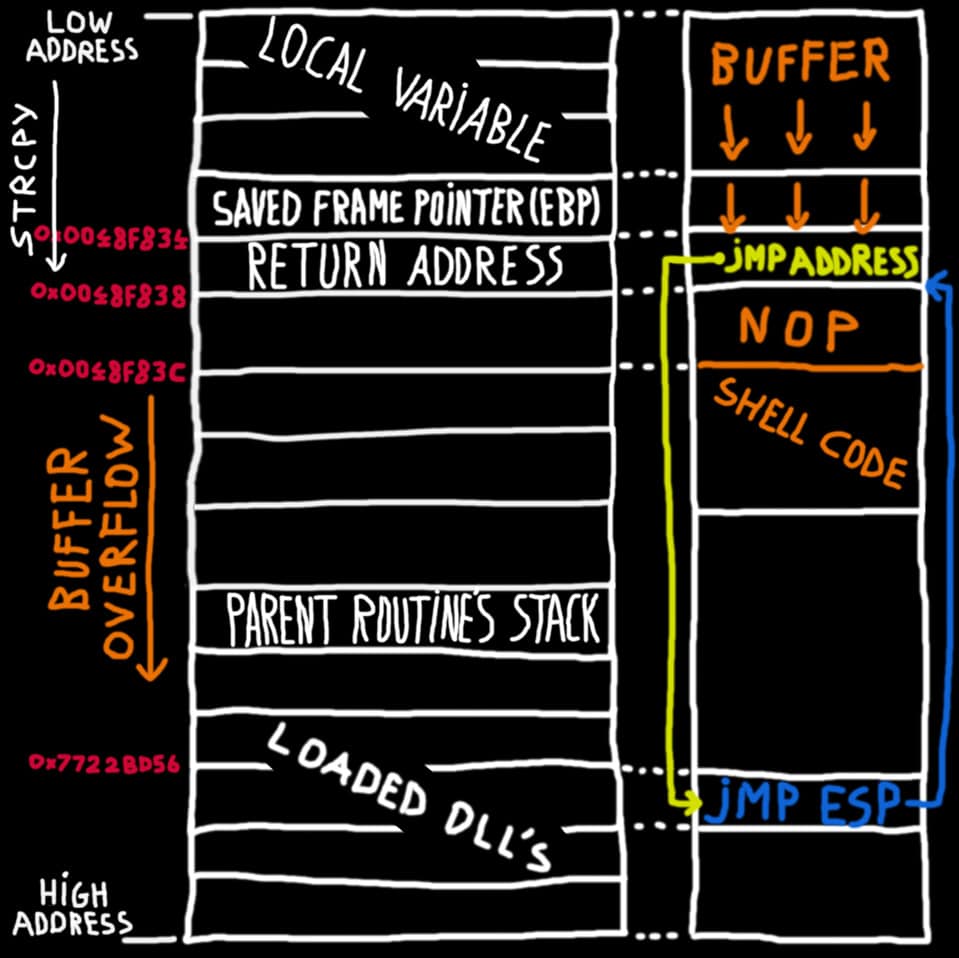Buffer overflow is a type of computer security vulnerability commonly found in software. It is caused by an application attempting to write more data to a memory buffer than the buffer can hold. Buffer overflows can lead to program crashing, memory corruption, and unexpected system behavior, including the execution of malicious code.
In computing, a buffer is a section of memory containing instructions or data ready to be processed. The buffer is limited in size, and if an application tries to write more data or instructions into it than it can handle, it is said to overflow. As a result, data in memory that the program expected to remain unchanged may be modified or lost, and sensitive data or passwords may be revealed.
The most common type of buffer overflow is a stack-based overflow, where an application tries to write data past the end of a buffer allocated on the stack. It is also possible for other stored buffers such as those allocated on the heap to overflow. Other types of buffer overflows can occur from heap overflows, printf and strcpy family function overflows, static buffer overflows and so on.
Buffer overflows can be difficult to detect and exploit. The way data is allocated in memory can also be used to make exploitation more difficult. However, proper coding practices can be used to make buffer overflow exploitation more difficult. These include the use of memory protection techniques such as Address Space Layout Randomization (ASLR) and Data Execution Prevention (DEP).
Buffer overflows are security vulnerabilities commonly exploited in cyber attacks in order to gain unauthorized access to a system. Therefore, it is important for software developers to identify potential buffer overflows before they can be exploited and take measures to prevent them.






